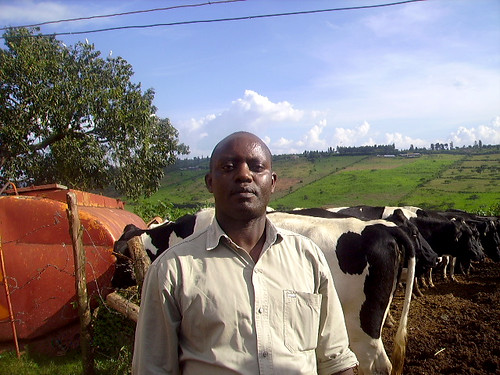Many countries around the world face challenges when it comes to milk production, particularly in Africa. Over the years, USDA’s Foreign Agricultural Service has helped to address this issue through education exchange programs, benefiting farmers around the world.
Rwanda is among the lowest milk-producing countries in the world, with a mere 3.2 liters produced per cow per day compared to 36 liters in the United States. Of the 1.2 million cattle in the country, only 13.6 percent produce milk. In addition, per capita milk consumption remains low at 31 liters annually compared to 100 liters in Kenya.
In 2006, the Government of Rwanda initiated a “One-Cow-One Household” program to boost milk production and reduce child malnutrition. By distributing 120,000 cows, the program has reached 34 percent of the 350,000 households targeted by 2017. Otto Muhinda, a former USDA Cochran Fellow from Rwanda, is in charge of this program and has been working with Rwandan dairy farmers to use U.S. gender-sorted genetics since 2009.

The Cochran Fellowship Program provides U.S.-based agricultural training opportunities for senior and mid-level specialists and administrators from public and private sectors who are concerned with agricultural trade, agribusiness development, management, policy, and marketing.
Mr. Muhinda participated in a Dairy Management and Genetics Cochran Fellowship Program two-week training course in Wisconsin and Ohio in November 2009. During the training he, along with three Fellows from Kenya, learned about herd management, nutrition, disease control, and breeding techniques. The program also included site visits to dairy farms, U.S. genetic company offices and collection sites, and dairy processing plants. The goal of the educational exchange was to increase milk production capacity through better management of dairy farms in Kenya and Rwanda while also promoting U.S. genetics in the dairy sector.
According to ABS TCM Ltd., a Kenya-based distributor of U.S. dairy genetics, Rwanda imported $540,000 of bovine genetics in 2010, which was not only the first, but also the largest sale of gender-sorted semen in Africa. The United States supplied conventional Holstein genetics.
As a result of Mr. Muhinda’s work with the local population, per cow milk production has increased from 3.2 liters in 2006 to 19 liters per day in 2010 for the households that have benefited from U.S. genetics. This is a perfect example of how education exchange programs can benefit overseas communities, while increasing export opportunities for U.S. producers.
